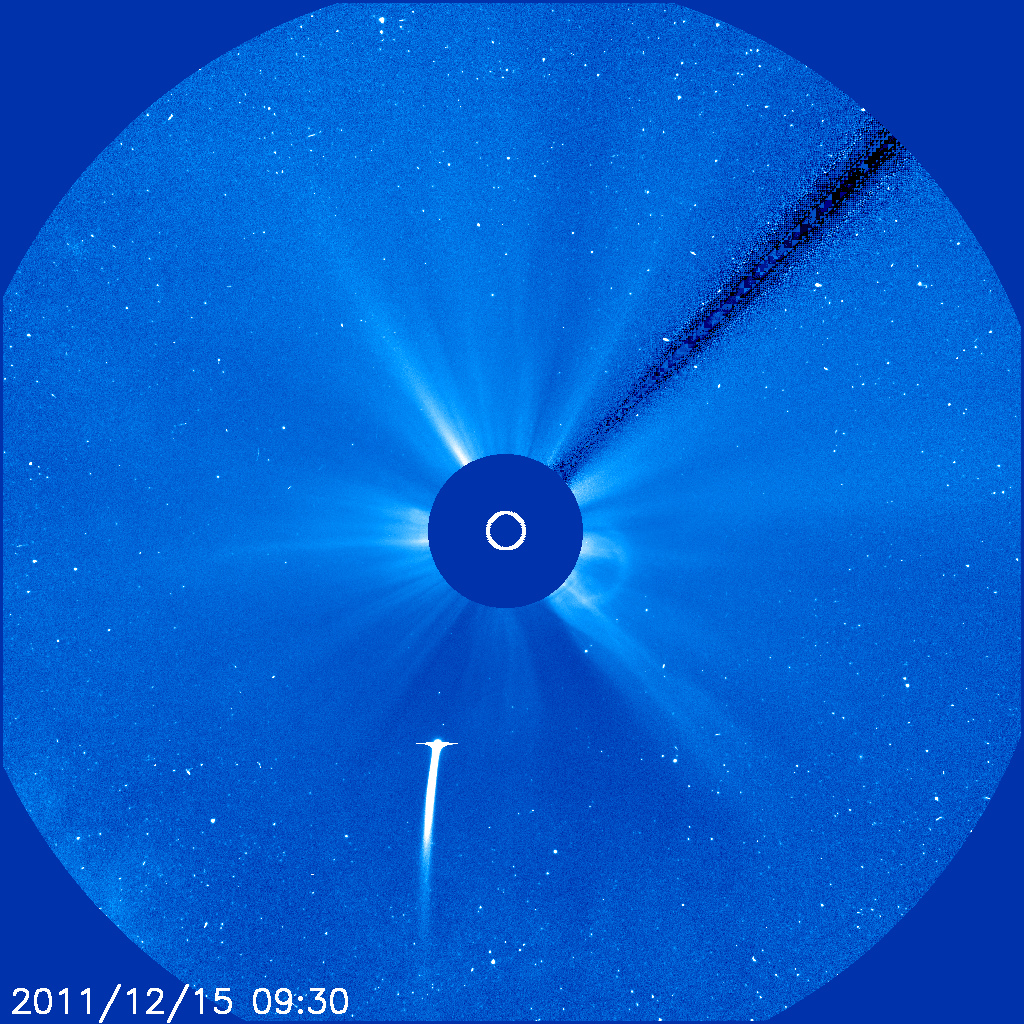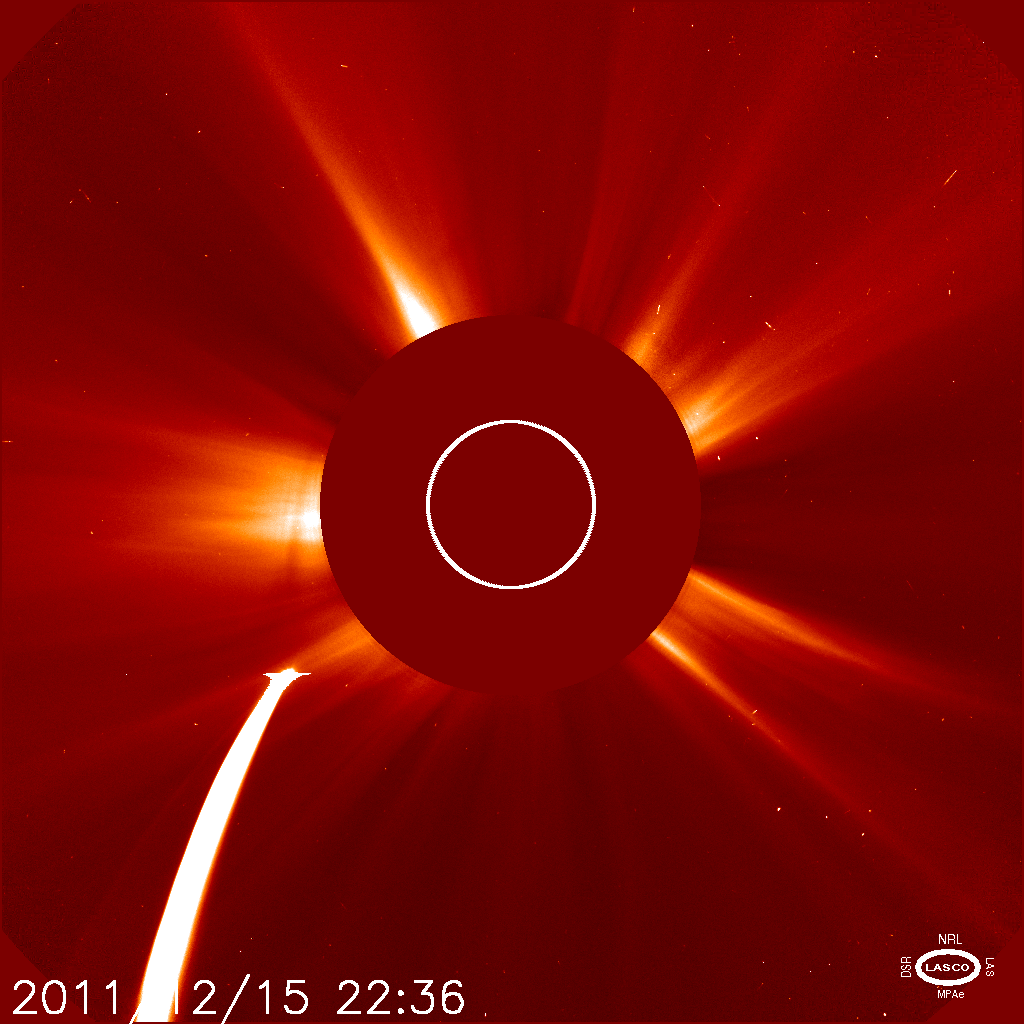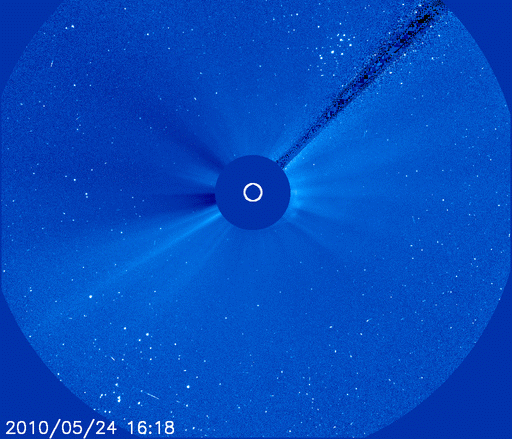In what could become the most spectacular solar event of an already eventful year, Comet Lovejoy (C/2011 W3) is racing towards solar doom today. With a coma that appears to be larger than Jupiter and with a tail stretching for tens of millions of miles, Comet Lovejoy is the first sungrazing comet observed directly from earth in over forty years. Discovered using a CCD-equipped telescope by Terry Lovejoy on November 27, Comet Lovejoy appears to be a member of the Kreutz group of sungrazing comets that have put on some of the most magnificent shows in recorded history.
There is even a possibility that Comet Lovejoy will be visible for a short time in broad daylight.
Technically, Comet Lovejoy is projected to come about 0.1 solar diameters from the Sun’s plasma surface (photoshere) at about 6 PM Central, but in reality the comet will almost certainly perish, perhaps spectacularly. In any case, Comet Lovejoy will likely outdo October’s amazing cometary solar impact event.
As with the October event, look for a resulting coronal mass ejection (CME). Quoting our October blurb:
Conventional astronomical theories cannot account for the violent solar reactions to these two impacts because neither body had sufficient mass or speed to violently blast significant amounts of ejecta millions of miles away from the sun’s surface. However, proponents of the Electric Universe predicted such behavior. According to them, comets are like giant capacitors that become highly electrically charged due to their eccentric orbits around the sun. When they plunge through the inner solar system, the dense solar winds trigger plasma discharges resulting in the tail and coma of the comet. If there is any truth to this idea, it is easy to imagine how a comet impact could disrupt the local magnetic field of the sun and result in a CME.
And if the CME is big and earth directed, be on the lookout for earthly consequences like auroral displays and even earthquakes.
UPDATE: Wow!


